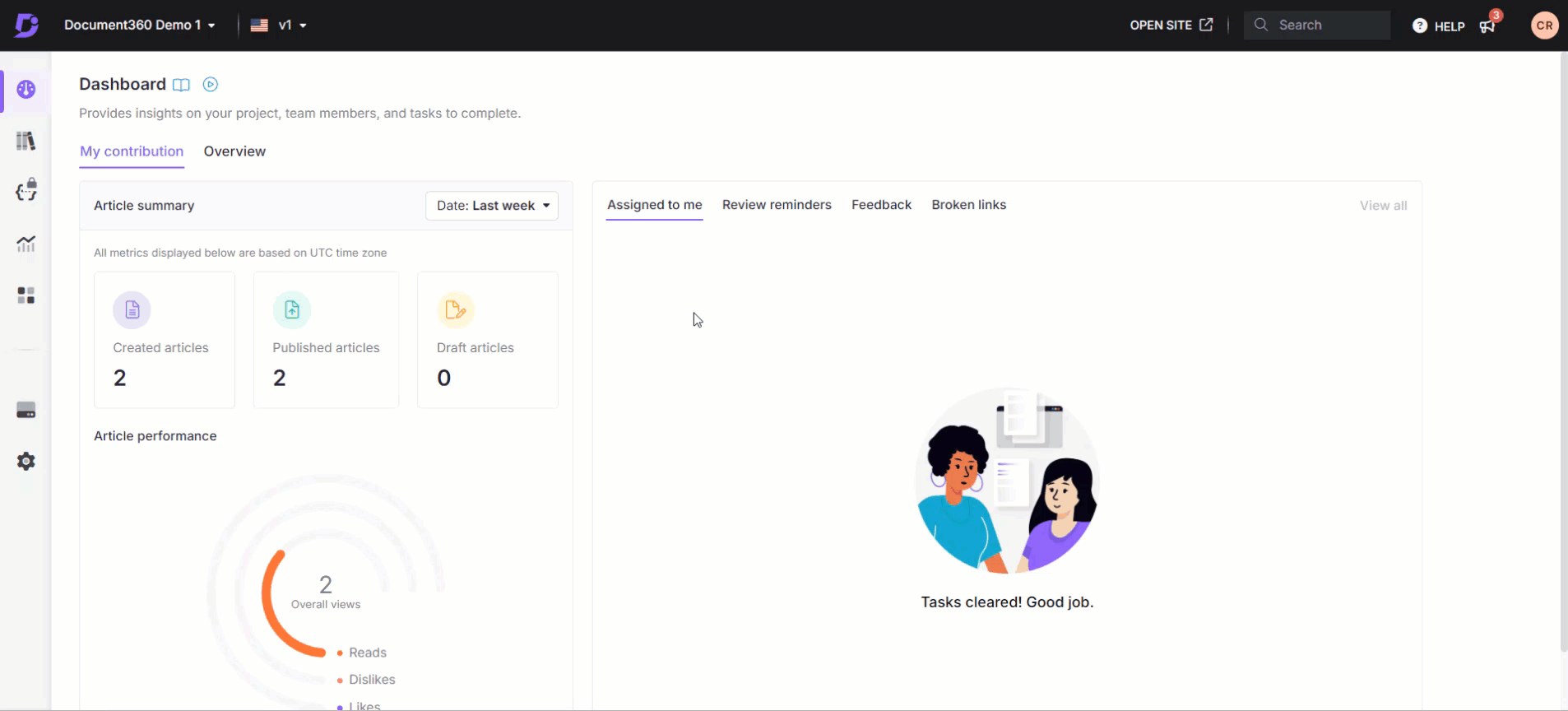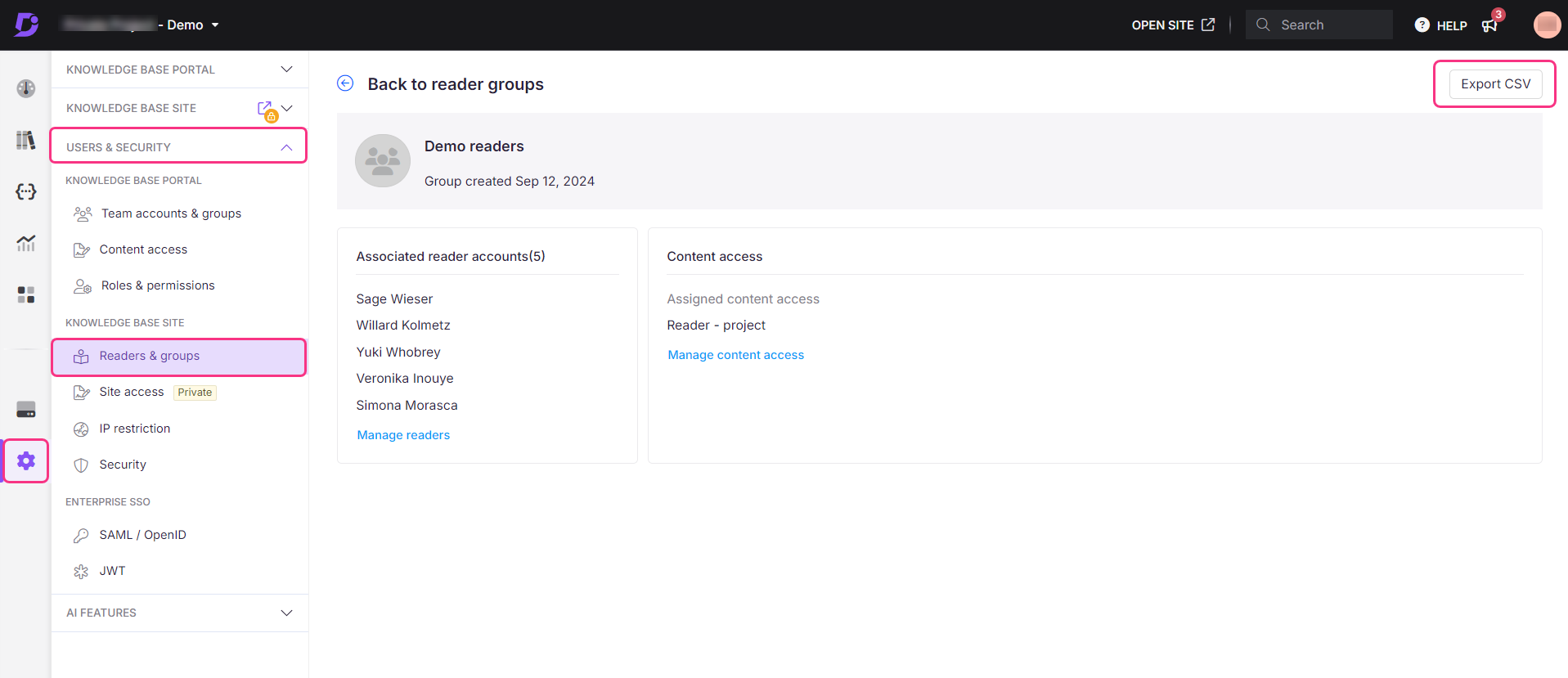Plans supporting readers in the knowledge base site
| Professional | Business | Enterprise |
|---|---|---|
| ✓ | ✓ | ✓ |
By organizing your readers into groups, you can streamline content access management and ensure that each reader has the appropriate permissions to view specific articles. Reader groups in Document360 allow you to efficiently control which sections of your knowledge base are accessible to different sets of readers.
Creating a new Reader group
To create Reader group(s) in your project,
From the Knowledge base portal navigate to Settings () > Users & security > Readers & groups > Reader groups.
Click New reader group, and the Create reader group panel opens.
Enter the name and description of the group in their respective fields.
Choose the level of content access you want the associated Reader accounts to hold.
The available levels of content access are None, All, Workspace/language, and Category.
Once done, click Next.
Add Reader accounts you want to associate with the reader group.
Click the Create reader group.
NOTE
By default, users in reader groups are organized alphabetically based on their email IDs.
JWT readers do not appear in the Document360 portal as they are authenticated through a JSON Web Token (JWT)

Click on the desired reader group and the details will appear.
Click Export CSV on the top right to download the list of users in a reader group in Excel/CSV format.

Edit or Delete a Reader group
Hover over the Reader group on the Overview page. The Edit () icon and Delete () icon appear. Click on each button to perform the respective operations.
FAQs
How many readers can be added to a reader group?
A reader group can hold a maximum of 5000 readers
What happens if I assign content access to a reader at both the individual and reader group levels?
When content access is assigned to a reader at both the individual and reader group levels, the individual-level permissions will take precedence.
For example, if a reader is granted access to the entire knowledge base at the individual level, but only to a specific category as part of a reader group, they will still have access to the entire knowledge base.


